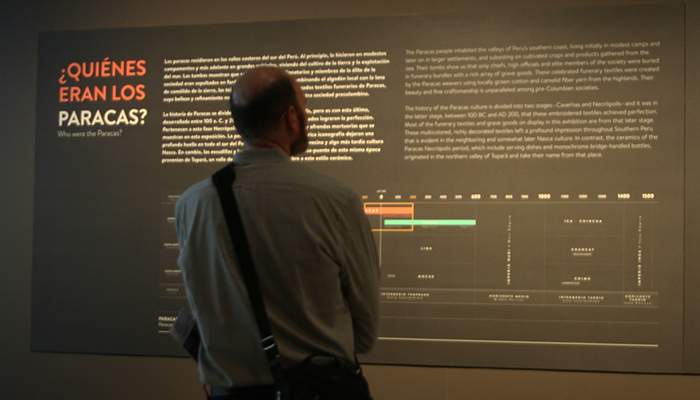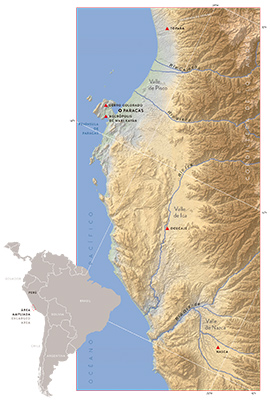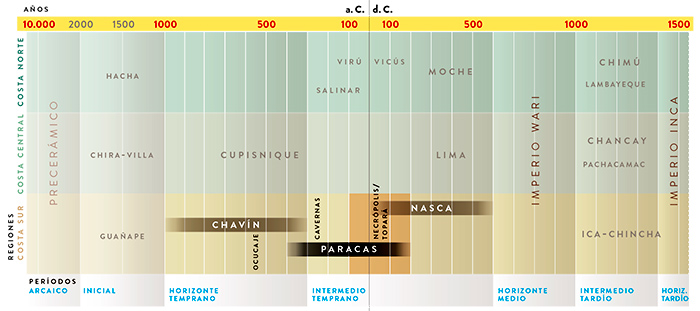Paracas Funerary Mantles: Offerings for Life – 2015
- Paracas funerary mantles: Offerings for Life
- Who Were The Paracas?
- The Wari Kayán Cemetery and Its discoverer
- What is a funerary bundle?
- Offerings for the Afterlife
- “Reading” the Images
- Severed heads, trophy heads
- Paracas textile art
- Three styles of embroidery
- A miniature outfit
- Headband: Turban I
- Headband: Turban II
- Headband: Turban III
- Turban-cloth: Two-headed serpents
- Skirt: Big-Eyed Being
- Uncu tunic with felines: Big-eyed Being
- Short poncho: Orcas
- Short poncho: Feline-Man
- Short poncho with fringes: Big-Eyed Being
- Attire of a Paracas chief
- Opening a funerary bundle from the Wari Kayán Necrópolis
- Mantles for the afterfile
- Bibliographic references
- Credits
Who Were The Paracas?
The Paracas people inhabited the valleys of Peru’s southern coast, living initially in modest camps and later on in larger settlements, and subsisting on cultivated crops and products gathered from the sea. Their tombs show us that only chiefs, high officials and elite members of the society were buried in funerary bundles with a rich array of grave goods. These celebrated funerary textiles were created by the Paracas weavers using locally grown cotton and camelid fiber yarn from the highlands. Their beauty and fine craftsmanship is unparalleled among pre-Columbian societies.
The history of the Paracas culture is divided into two stages—Cavernas and Necrópolis—and it was in the latter stage, between 100 BC and AD 200, that these embroidered textiles achieved perfection. Most of the funerary textiles and grave goods on display in this exhibition are from that later stage. These multicolored, richly decorated textiles left a profound impression throughout Southern Peru that is evident in the neighboring and somewhat later Nasca culture. In contrast, the ceramics of the Paracas Necrópolis period, which include serving dishes and monochrome bridge-handled bottles, originated in the northern valley of Topará and take their name from that place.






































